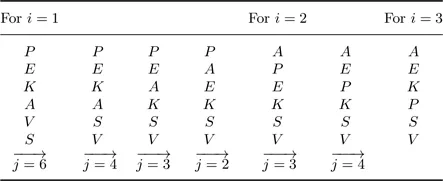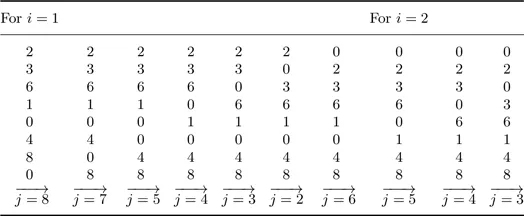
An Elementary Approach to Design and Analysis of Algorithms
Lekh Raj Vermani, Shalini Vermani
- 536 pages
- English
- ePUB (adapté aux mobiles)
- Disponible sur iOS et Android
An Elementary Approach to Design and Analysis of Algorithms
Lekh Raj Vermani, Shalini Vermani
À propos de ce livre
In computer science, an algorithm is an unambiguous specification of how to solve a class of problems. Algorithms can perform calculation, data processing and automated reasoning tasks.
As an effective method, an algorithm can be expressed within a finite amount of space and time and in a well-defined formal language for calculating a function. Starting from an initial state and initial input (perhaps empty), the instructions describe a computation that, when executed, proceeds through a finite number of well-defined successive states, eventually producing 'output' and terminating at a final ending state. The transition from one state to the next is not necessarily deterministic; some algorithms, known as randomized algorithms, incorporate random input.
This book introduces a set of concepts in solving problems computationally such as Growth of Functions; Backtracking; Divide and Conquer; Greedy Algorithms; Dynamic Programming; Elementary Graph Algorithms; Minimal Spanning Tree; Single-Source Shortest Paths; All Pairs Shortest Paths; Flow Networks; Polynomial Multiplication, to ways of solving NP-Complete Problems, supported with comprehensive, and detailed problems and solutions, making it an ideal resource to those studying computer science, computer engineering and information technology.
Contents:
- Preface
- About the Authors
- Algorithms
- Growth of Functions
- Backtracking
- Divide and Conquer
- Greedy Algorithms
- Dynamic Programming
- Elementary Graph Algorithms
- Minimal Spanning Tree
- Single-Source Shortest Paths
- All Pairs Shortest Paths
- Flow Networks
- Polynomial Multiplication, FFT and DFT
- String Matching
- Sorting Networks
- NP-Complete Problems
- Bibliography
- Index
Readership: Students studying for degrees in computer science, computer engineering and information technology.Algorithms;Computer Science;Computer Engineering;Information Technology00
Foire aux questions
Informations
Chapter 1
Algorithms
1.1.Some Sorting Algorithms

1.1.1.Bubble sort




